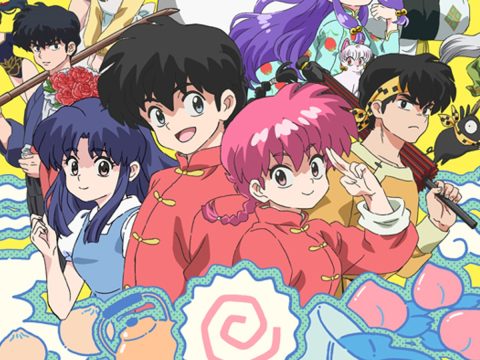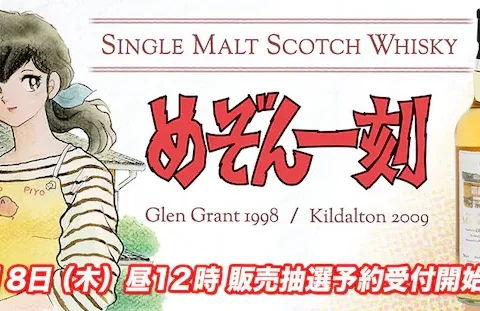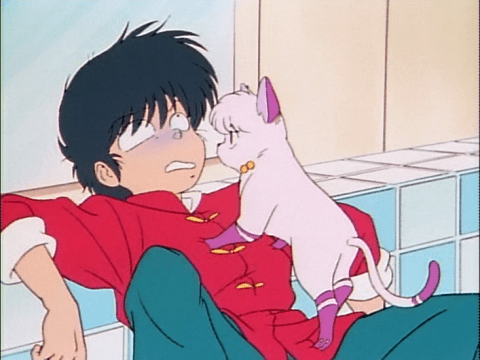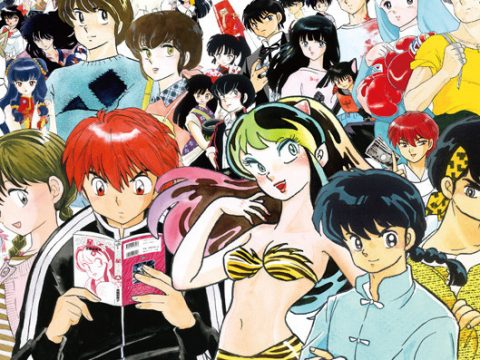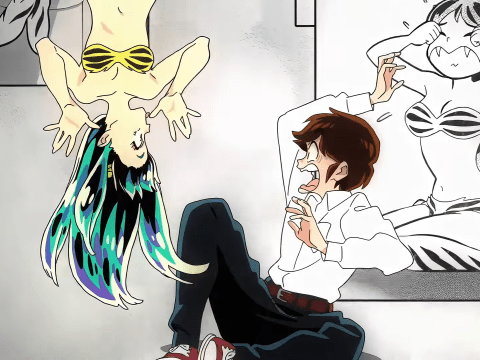
 Ranma ½ used to mean something. It was a cornerstone of my early anime fandom, a show that hearkened back to an age long before high-speed Internet and digital distribution, before even the rise and decline of the DVD. It was an example of what anime could offer to a snot-nosed kid who’d never heard of Osamu Tezuka, who didn’t know a lick of Japanese, and whose understanding of Asian cultures was comparable to that of the common hermit crab. I was that snot-nosed kid, and Ranma ½, with its casual nudity and its sophomoric humor and its patented “martial arts mayhem,” was a gateway to another world. Who knew Yin and Yang could be so much fun?
Ranma ½ used to mean something. It was a cornerstone of my early anime fandom, a show that hearkened back to an age long before high-speed Internet and digital distribution, before even the rise and decline of the DVD. It was an example of what anime could offer to a snot-nosed kid who’d never heard of Osamu Tezuka, who didn’t know a lick of Japanese, and whose understanding of Asian cultures was comparable to that of the common hermit crab. I was that snot-nosed kid, and Ranma ½, with its casual nudity and its sophomoric humor and its patented “martial arts mayhem,” was a gateway to another world. Who knew Yin and Yang could be so much fun?
Back then it all seemed so new and different. So imagine my chagrin when I dusted off my DVD copy of Ranma ½: Big Trouble in Nekonron, China for the first time in over a decade and suffered through seventy-four minutes of utterly generic storytelling.
Big Trouble in Nekonron, China is the first theatrical feature created as a tie-in for one of creator Rumiko Takahashi’s most successful franchises. A martial arts sex-comedy—or more accurately a ‘comedy of the sexes’, since nobody ever has sex—Ranma ½ revolves around the titular character, Ranma Saotome. The heir to the Saotome School of ‘Anything Goes’ Martial Arts, Ranma has a peculiar problem. After a fateful training trip to the Cursed Springs of Jusenkyo in China, whenever he’s splashed with cold water, Ranma turns into a buxom, redheaded girl. Warm water reverses the transformation, but as if the curse wasn’t burden enough for the budding young martial artist, he’s also saddled with an unwanted engagement to a tomboyish young lady, Akane Tendo, who expresses all of her grievances with her fists. Akane and Ranma bicker constantly, so they must secretly be deeply in love.
That’s how things work in shonen action/romance/comedy. No one makes it past the hair-pulling stage.
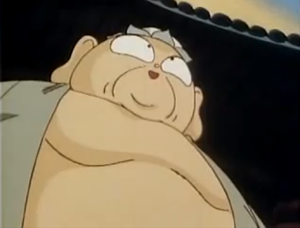 Both Ranma and Akane are pursued by numerous other suitors, some with their own shape-changing curses, all with one-note, one-joke personalities. None of this backstory is obvious in Big Trouble in Nekonron, China. The film assumes the viewer has already read dozens of manga volumes or watched approximately one hundred and fifty television episodes. The viewer must already be intimately familiar with a huge cast of characters and their many tangled relationships. Chinese amazons. Perverted old men. Masters of improbable martial arts ranging from figure skating to tea ceremony. These characters strut for a moment on the stage before being shuffled aside for the sake of the next goofy joke. Add to this chaotic mix an entirely new set of characters based on the Shichi Fukujin, the Seven Gods of Fortune from Japanese mythology, and you have a recipe for the prototypical shonen action movie.
Both Ranma and Akane are pursued by numerous other suitors, some with their own shape-changing curses, all with one-note, one-joke personalities. None of this backstory is obvious in Big Trouble in Nekonron, China. The film assumes the viewer has already read dozens of manga volumes or watched approximately one hundred and fifty television episodes. The viewer must already be intimately familiar with a huge cast of characters and their many tangled relationships. Chinese amazons. Perverted old men. Masters of improbable martial arts ranging from figure skating to tea ceremony. These characters strut for a moment on the stage before being shuffled aside for the sake of the next goofy joke. Add to this chaotic mix an entirely new set of characters based on the Shichi Fukujin, the Seven Gods of Fortune from Japanese mythology, and you have a recipe for the prototypical shonen action movie.
That is, you have a movie where nothing significant happens to advance the narrative. The bad guys kidnap Akane. Ranma rescues her. It’s not so much bad as boilerplate. New conflicts are quickly resolved. Old conflicts remain undeveloped. No change, no growth, no character development. Ranma and Akane are still at each other’s throats, too stubborn to ever admit their mutual attraction. Tune in next week for more of the same, until the ratings drop and the anime gets canceled and the manga concludes ambiguously.
I can’t tell you how many times I’ve let Rumiko Takahashi pull this trick on me.
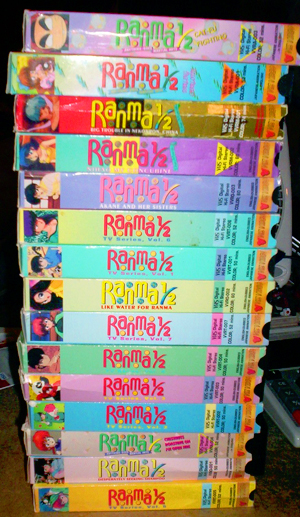 When I was younger, Ranma ½ was a big deal. I used to pore through the Viz Shop-By-Mail catalog, gazing enviously at VHS box sets that cost one hundred and eighty dollars or more. The individual tapes were equally extravagant. Two dubbed episodes, thirty-five dollars. Three subtitled episodes in a clamshell case, forty-five dollars. These were the prices we paid for Ranma ½, because to us at least it was fresh and original and more than a little taboo. I used to own the entirety of Ranma ½ on DVD, but over the years I’ve winnowed that down to just two movies and a collection of OVAs. Revisiting Big Trouble in Nekonron, China, makes me wonder if perhaps I didn’t winnow hard enough.
When I was younger, Ranma ½ was a big deal. I used to pore through the Viz Shop-By-Mail catalog, gazing enviously at VHS box sets that cost one hundred and eighty dollars or more. The individual tapes were equally extravagant. Two dubbed episodes, thirty-five dollars. Three subtitled episodes in a clamshell case, forty-five dollars. These were the prices we paid for Ranma ½, because to us at least it was fresh and original and more than a little taboo. I used to own the entirety of Ranma ½ on DVD, but over the years I’ve winnowed that down to just two movies and a collection of OVAs. Revisiting Big Trouble in Nekonron, China, makes me wonder if perhaps I didn’t winnow hard enough.
Some anime is like fine wine, acquiring more body and flavor as it ages, accumulating subtle nuances over the passage of years. And some of it, when left on the shelf too long, turns to vinegar. If Ranma ½ were a wine, it would be the kind that came in a box: sometimes sweet, sometimes effective, but ultimately disposable.
Distributor: Viz Media
Originally released: 1991
Running Time: 74 minutes



